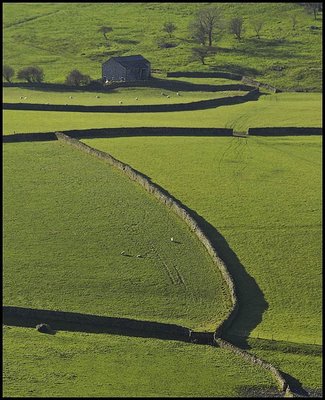I suppose having embarked on a list they felt that it would have greater validity if it represented the views of the people as a whole. They couldn't be more wrong! That thinking is analagous to believing that the pop songs in the Top Ten are the best songs currently available because that's what people are buying!
The list hasn't been completed yet, but some icons have already been chosen, and many more offered. Who could argue with Stonehenge, the map of the London Underground, the red telephone box (the few left that haven't been destroyed), Sgt Pepper's Lonely Hearts Club Band, or even (possibly the most original item suggested) the "V" sign? But the River Thames? The rose? English weather? The stiff upper lip? Or, Winnie the Pooh, now, thanks to Disney, known to millions of English children as a bear with an American accent?! The developing list can be seen here.
Well, having said all that, I suppose I must offer a suggestion, and here it is - the drystone wall! Yes, it isn't representative of much of the south of England, but so what! The photograph above shows some of these walls, so-called because no mortar is used in their construction, near Giggleswick (yes really!) in the Yorkshire Dales. I took the shot with a long zoom lens from high limestone cliffs overlooking the fields. The arrangement of the walls with their strong shadows, leading to the rougher land with the barn and small trees, seemed a good, bold, composition. The closely cropped grass, illuminated by the low morning sun was as green/yellow as shown, and gave the image an unexpected vibrancy - perhaps the farmer's hand had slipped when applying the fertilizer!
photograph & text (c) T. Boughen
